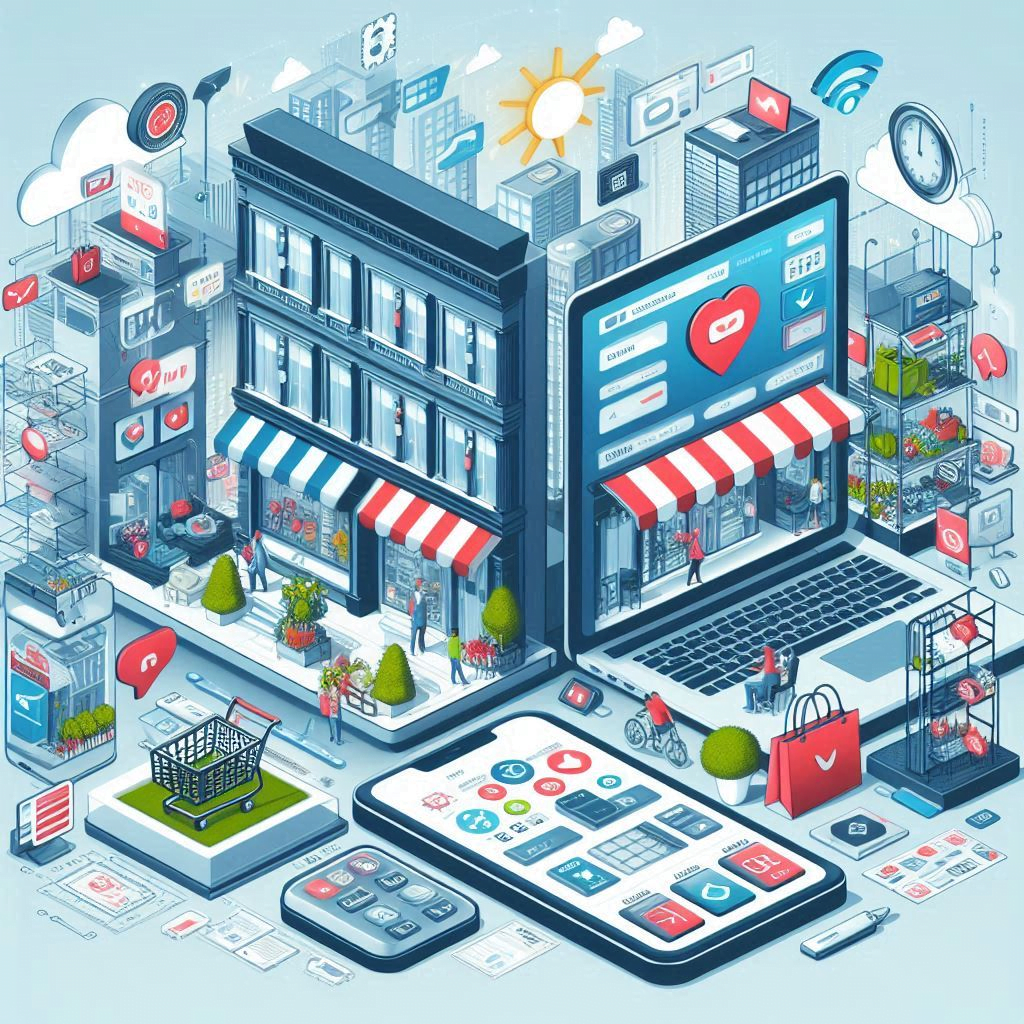In the realm of online shopping standing out is crucial. Introducing the e commerce platform, a cutting edge technology that empowers businesses to move beyond the constraints of one size fits all solutions. This detailed guide will shed light on the capabilities of e commerce platforms detailing their functionalities highlighting their benefits and potential drawbacks and ultimately assisting you in determining if this innovative approach is the key, to maximizing your online stores potential.
With 25 years of experience navigating the world of retail I’ve witnessed the evolution from slow dial up connections to todays rapid mobile interactions. The constant need to stay ahead remains unchanged. This is where headless commerce steps in.
While a headless commerce platform may seem complex at glance fret not! This guide will serve as your trusted companion explaining all you need to know in terms with examples, for better understanding.
By the end of this journey, you’ll be able to answer these crucial questions:
- What is a headless ecommerce platform?
- Is headless commerce right for my business?
- What are the benefits and drawbacks of going headless?
- How does headless commerce platform compare to traditional platforms?
Alright go ahead. Get yourself a drink get comfortable and lets dive into how headless commerce can help boost your e commerce business!
Understanding Headless Ecommerce Platforms: From Jargon to Clarity
Imagine your shop like a display window presenting your products. This window represents the “end ” the aspect that customers engage with. Behind the scenes tucked away in a storage room you’ll find your product inventory order processing system and customer information – that’s the “back end.”
In an shopping platform these front end and back end components are closely linked. They’re akin, to an off the rack suit – one size, for all.. What if you desire a custom experience tailored to suit your brand and customer preferences?
Let’s talk about headless ecommerce, where the end and back end are separated. It’s, like having a storefront window without linking it to the storeroom. This setup lets you design your storefront (front end) using any technology you prefer whether it’s a content management system (CMS) a mobile app or even a voice assistant interface. At the time the headless platform, in the back end smoothly manages all product data order processing and customer details.
Let me give you an example to help explain the idea;
Think of a Traditional Ecommerce Platform like a made restaurant kitchen, with fixed tools (end) that determine the type of dishes you can prepare (front end). Your options are limited to whats on the set menu.
On the hand a Headless Ecommerce Platform is like a modern commercial kitchen (back end) with adjustable tools that can be set up to cook any type of cuisine. You have the freedom to create a menu (end) featuring anything from sushi, to pizza based on your preferences.
Examples of Headless Commerce Platforms:
Now that we understand the idea lets explore further into the realm of commerce using real life instances…
Real-World Examples of Success with a Headless Ecommerce Platform
Headless commerce goes beyond being a term. Prominent companies are using its adaptability to develop captivating shopping interactions. Here are a few motivating instances;
- Sephora revamped their app using an architecture enabling them to offer personalised recommendations based on users past purchases and browsing habits. Picture browsing through the app and discovering tailored suggestions, for your foundation shade or a new lipstick colour that complements your buys. This high level of customisation is a feature of a commerce platform.
- Triyoga, a yoga apparel brand in London desired control over their brand identity. Feeling constrained by platforms they turned to commerce to create a unique website that seamlessly integrates with their yoga class bookings and loyalty program. The outcome? A unified experience that strengthens customer loyalty while staying true to the brand.
These examples showcase the potential of commerce. Lets now delve into the advantages that could make it an ideal choice, for your business.
Why Go Headless? Unveiling the Advantages
Headless commerce doesn’t work for every business. It provides a range of benefits that can give companies an advantage;
- Looking for a one of a kind store setup? With Headless you can create it using any front end tech you prefer whether it’s an app or a voice controlled shopping encounter. It’s, like having the freedom to craft your shop without being limited by made templates.
- Innovating faster; Using an architecture enables you to update your websites appearance without disrupting the backend. This means you can swiftly introduce features and adjust to changing customer preferences. Picture being able to try out a checkout process or tweak your loyalty program without disrupting your online shop.
- Omnichannel Capability; Headless technology enables you to provide a shopping experience across platforms – such, as mobile apps, websites, social media and voice assistants. Customers have the flexibility to begin their shopping journey on one device and easily finish it on another. For example imagine a customer exploring products on their smartphone while commuting and then smoothly finalising the purchase on their laptop once they reach home.
- Growing your business is made easier, with Enhanced Scalability. Your headless platform can smoothly expand to handle traffic and products as your business expands. Picture effortlessly adding thousands of products to your store without any concerns, about performance. The headless architecture is designed to manage this
- Enhanced Efficiency; Operating without a central server structure frequently results in loading speeds and a seamless user interaction. This enhancement can directly result in sales and happier customers. Picture a shopper exploring your items and encountering a checkout procedure – a winning formula, for business prosperity.
There are advantages that contribute to the appeal of commerce. Yet it’s essential to grasp the downsides before taking the plunge.

The Potential Drawbacks of Headless Ecommerce Platforms
Although headless commerce comes with advantages it also presents its set of obstacles. Lets take a look to ensure you have all the information needed to make a informed choice;
- Headless architecture demands a level of proficiency, for its setup and upkeep compared to conventional platforms. It’s akin to constructing a tailor made house – it provides flexibility. Necessitates the expertise of an experienced architect and builder. For companies, with restricted capabilities adopting an approach might entail collaborating with development firms or recruiting extra personnel.
- Investing upfront; Setting up a platform can require an initial investment, than certain traditional all, in one solutions. This encompasses the expenses of acquiring the platform front end development and continuous integration and maintenance charges. It’s important to evaluate your budget and available resources before jumping in.
- The Importance of Having In House Professionals; Successfully handling a platform typically calls for a proficient internal development team or a dependable development collaborator. Their role involves overseeing the user interface linking it to the backend and guaranteeing operations.
- Security Considerations; When using an architecture security responsibilities are shared between the end and back end providers. It is important to select vendors that have security protocols in place. Conducting security assessments and taking a stance are vital steps, to safeguarding your system.
- Headless commerce may not be the fit, for every business. It could be much for small businesses, with a small product selection and straightforward sales approach. The advantages might not justify the costs and added complexity. It works better for businesses that are expanding their product offerings aiming for a brand experience and have the capabilities to handle it efficiently.
Making the Headless Choice: Are You Ready?
Businesses can leverage commerce to escape the limitations of platforms and craft distinctive shopping experiences. Nevertheless this approach demands thought and strategic preparation.
Considering these guidelines can assist you in determining whether headless is a match, for your company;
- Do you have a strong vision for a unique and differentiated customer experience?
- Are you comfortable with a higher initial investment and ongoing maintenance costs?
- Do you have the in-house technical expertise or a reliable development partner to manage the headless architecture?
- Is your business growing, and do you anticipate the need for greater scalability and flexibility in the future?
If you answered yes to most of these questions, headless commerce could be the key to unlocking your e-commerce potential.
In the next section we will explore the details of headless content management systems (CMS) an element of headless architecture and how it differs from conventional content management systems.
Headless CMS: The Brains Behind the Beauty
Imagine the showcase window of your shop. It’s not, about showcasing products; it’s about crafting a brand story through interesting content like blog articles, item descriptions and eye catching visuals. This is where a Content Management System (CMS) plays a role.
In an online selling platform the CMS is closely linked with the system. However headless commerce introduces an element; the Headless CMS. Just as a headless setup separates the front end shopping experience, from the processes a Headless CMS disconnects content management from the commerce engine.
Think of it this way:
- Traditional CMS: The content editor and the storefront window are part of the same building. Changes made in the editor directly impact the window display.
- Headless CMS: The content editor is in a separate building, but there’s a seamless connection to the storefront window. You can make edits to the content without affecting the window itself.
This decoupling offers several advantages:
- Content Freedom: A headless CMS allows you to manage content for all your touchpoints – website, mobile app, social media – from a single platform. Imagine creating a blog post and effortlessly publishing it across all your channels.
- Omnichannel Consistency: Headless CMS ensures consistent brand messaging and visual identity across all your platforms. Imagine your customers encountering the same high-quality content and visuals, regardless of how they interact with your brand.
- Faster Innovation & Flexibility: Headless CMS empowers you to experiment with different content formats and layouts on your front-end without impacting your back-end commerce engine. Think of trying out a new blog layout or adding video tutorials to your product pages – all without disrupting your core business operations.
- API Power: Headless CMS utilises APIs (Application Programming Interfaces) to connect with your headless commerce platform and other applications. This allows for a smooth flow of data and a truly integrated experience.
Lets quickly compare CMS and traditional CMS to better understand the concept.
| Feature | Headless CMS | Traditional CMS |
|---|---|---|
| Content Management | Separate from the commerce engine | Integrated with the commerce engine |
| Front-End Flexibility | Works with any front-end technology | Limited to the platform’s pre-built templates |
| Omnichannel Content | Manages content for all platforms from one location | Content management often platform-specific |
| Innovation & Agility | Easier to experiment with new content formats | Limited flexibility for content presentation |
| Security | Requires a focus on API security | Security managed by the platform |
The Headless CMS Showdown: Headless vs. WordPress
WordPress is a popular content management system, but how does it fare against a headless CMS in the e-commerce world?
Headless CMS:
- Pros: Greater flexibility, omnichannel content management, faster innovation, API integrations.
- Cons: Higher complexity, requires technical expertise, potentially higher costs.
WordPress:
- Pros: User-friendly, vast plugin ecosystem, large developer community, cost-effective.
- Cons: Limited scalability for large e-commerce stores, potential security vulnerabilities, less flexibility for front-end customization.
Your decision should be based on your requirements. A headless CMS is ideal, for companies looking for customisation and seamless content management across channels. On the hand WordPress could serve as an entry point for smaller businesses, with straightforward content strategies.
The Road to Headless Success: Next Steps
We’ve delved into the realm of commerce and headless content management systems. If you’re curious, about the opportunities it presents here are some materials to assist you on your exploration of the approach;
- Headless Commerce Institute: Provides educational resources and certification programs
- MACH Alliance: Advocacy group for modern, API-first architecture
Just keep in mind that deciding to transition to an approach is a step. It’s important to evaluate your resources, technical know how and future e commerce objectives before making the switch. Yet if you’re prepared to unleash the capabilities of your store and deliver a one of a kind shopping experience adopting headless commerce could be the transformative solution you’ve been seeking.
Frequently Asked Questions About Headless Commerce Platforms
Here are some of the most common questions that e-commerce professionals have about a headless commerce platform:
What are the hidden costs associated with headless commerce?
Development Costs: Building and maintaining a custom front-end experience with a headless architecture often requires more development expertise compared to using pre-built templates in traditional platforms. This could translate to higher development costs, especially if you don’t have an in-house team.
Integration Costs: Connecting your headless platform with various tools and services (payment gateways, shipping providers, marketing automation) might require custom integrations, incurring additional fees.
Ongoing Maintenance: Headless architecture requires ongoing maintenance to ensure security, performance, and compatibility with evolving technologies. Factor in these ongoing costs when evaluating the total cost of ownership.
Is there any way to try headless commerce before going all-in?
How can I tell if a website is using headless commerce?
Highly customised user interface: Does the website have a unique and unconventional layout that doesn’t resemble a typical “off-the-shelf” e-commerce platform?
Fast loading times and smooth performance: Headless architecture can lead to faster page load speeds due to the decoupled front-end and back-end.
Seamless integration with various apps and services: Does the website integrate effortlessly with social media platforms, loyalty programs, or chatbots?
Is headless commerce bad for SEO (Search Engine Optimisation)?
Focus on technical SEO: Ensure your headless platform generates clean and crawlable code for search engines. Optimize page titles, meta descriptions, and image alt tags for relevant keywords.
Maintain a strong content strategy: High-quality, informative content remains crucial for attracting organic traffic. Continue to create valuable blog posts, product descriptions, and other content that resonates with your target audience.
Utilize structured data: Headless platforms often require manual implementation of structured data markup, which helps search engines understand your content and improve search results.
By following these best practices, you can ensure your headless website remains discoverable on search engines.
What are some of the biggest challenges businesses face with headless commerce?
Technical Complexity: Headless architecture requires more technical expertise to set up and maintain compared to traditional platforms. This can be a challenge for businesses with limited technical resources.
Integration Challenges: Integrating your headless platform with various tools and services can be complex and require custom development work.
Project Management: Headless projects often involve multiple vendors – headless platform provider, front-end development team, and potentially other agencies. Effective project management is crucial to ensure smooth implementation and avoid delays.
Is headless commerce worth the investment?
However, for smaller businesses with a simple product catalogue and a limited budget, the complexity and initial investment of headless might not be justified. Carefully evaluate your needs and goals before making the leap.
That wraps up our overview of commerce platforms. By grasping the ideas, advantages and possible limitations you have the tools to decide if headless suits your business. Keep in mind success, in e commerce requires learning and adjustment. Embrace the possibilities of commerce. Witness your online store soar to greater heights!

